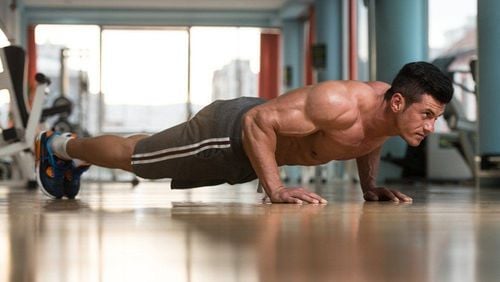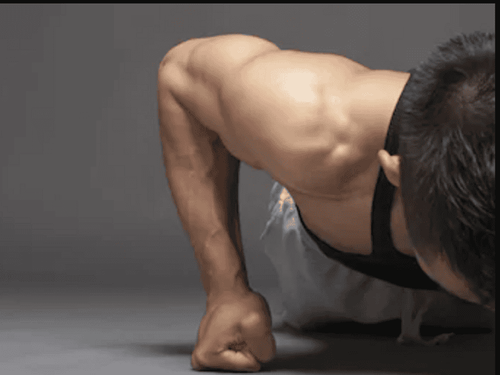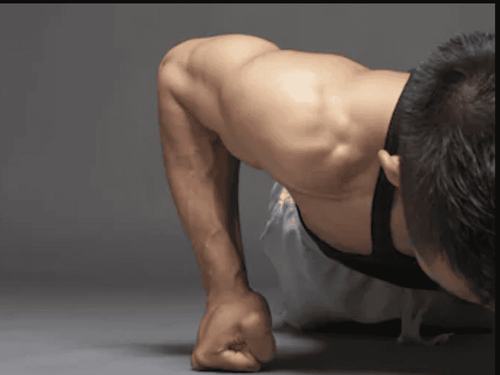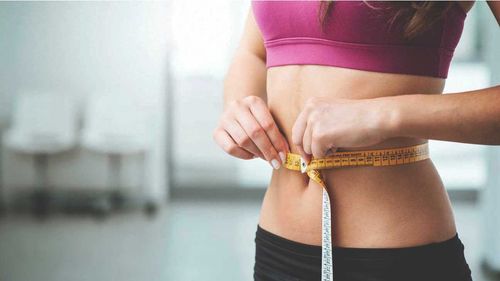This is an automatically translated article.
What push-ups do to increase muscle, six-pack push-ups are not necessarily a common question for those who are preparing to practice sports, including push-ups. So what muscles in the body do push-ups really develop?Push-ups are a simple exercise that can help strengthen and tone many muscles in the upper body and midsection. There are many variations of push-ups to suit the ability of the practitioner and focus on different muscle groups. Here are the answers to which muscle group push-ups work best and guide to 6 different push-ups.
1. What do push-ups increase muscle?
The muscles in the upper body play a major role in doing push-ups. These muscles include:
The pectoral muscle group includes the pectoralis major and pectoralis minor. The shoulder muscle group consists of the large deltoid muscle and the small deltoid muscle. Upper back and mid back muscles, including the large muscles located in the upper back, the obliques, and the trapezius. Biceps, front of arms triceps, back of upper arms. The anterior molar muscle, located on the side of the chest below the upper arm. Besides the muscles in the upper body, do push-ups develop any muscles in the lower body? The answer is that push-ups also require many other muscles in the body to work to keep the body in a rigid plank position. Muscles in the lower body include:
Lower back muscles Abs, core muscles Glutes include glutes, glutes medium, and glutes minor Leg muscles include knee flexors, quads, calves, and tubules Legs SEE ALSO: Is back pain after doing push-ups in the wrong position dangerous?
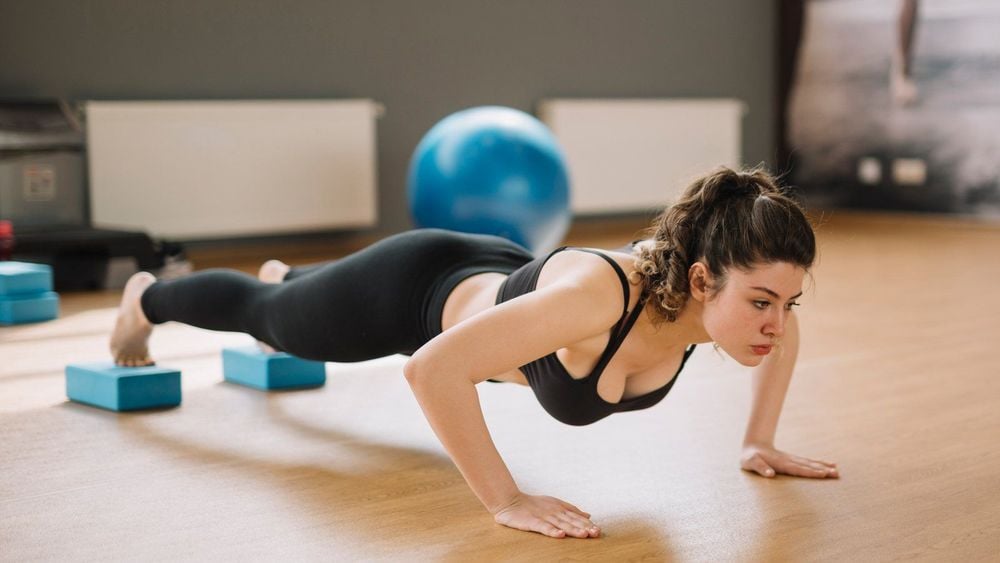
Các cơ ở phần trên cơ thể đóng vai trò chính trong việc thực hiện bài tập hít đất
2. Instructions on specific muscle push-up exercises
Push-ups are a simple exercise that requires little or even any equipment, so anyone can easily do this exercise at home. In addition, there are many variations of push-ups that are suitable for each person's fitness and ability.
Below is a guide to 8 specific push-up exercises, for people from beginners to advanced.
2.1 Wall push-ups are suitable exercises for beginners or those who want to do push-ups but have a shoulder injury. The push-up exercises on any specific muscle, that is, the arms, shoulders, chest and is done as follows:
The practitioner stands about more than an arm's length from a wall, placing his feet shoulder-width apart. Hands raised to shoulder level, body leaning towards the wall, arms resting on the wall and shoulder width apart. Inhale, elbows bent so that the body is brought towards the wall. Pay attention to keep your posture straight by squeezing your core and glutes. Use your arms to push your body away from the wall, but keep your hands on the wall. Note that if you feel your heels move when performing this exercise, move closer to the wall so that your feet are always in contact with the floor. Do this exercise for 3 sets, 12 times each. 2.2 Variable Push-ups This variation push-up is for those who want to do a more difficult exercise than wall push-ups but aren't ready for a standard push-up. Make sure to keep your posture straight by focusing and squeezing all the muscles. So, the transformation of a specific inorganic push-up, which is the arms, shoulders, chest and front muscles, is done as follows:
The starting position for this exercise is with the knees and toes on the floor. Eyes towards the floor, hands on the floor, keep arms straight. Inhale, elbows bent to bring the body low to the floor. Pay attention to keep your posture straight by squeezing your core and glutes. Exhale and use your arms to lift your body off the floor, returning to the starting position. Pay attention that the back should not sag, keep the core muscles tight, the buttocks do not rise high. Do this exercise 12 times in each set for a total of 3 sets.
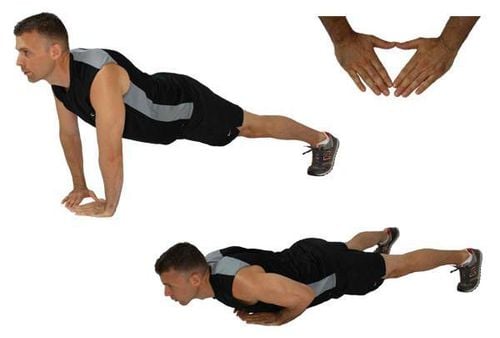
Bài tập hít đất phát triển cơ ngực
2.3 Standard push-ups Standard push-up exercises develop specific muscles, which are chest muscles, done correctly as follows:
Start in a plank position, pelvis pulled in, keep neck fixed, back flat . Bend elbows to lower body until chest touches floor. Extend your elbows and push your body back to the starting position. You can do this exercise as many times as you can, depending on your fitness, and do it for 3 sets.
2.4 Arm Extension Push-ups The arm-extension push-up is slightly different from the standard push-up in that the arms are spread apart and placed further apart. What specific muscle is the push-up exercise, which is the chest and shoulder muscles. Do this move like this:
Start in a plank position but arms are wider than shoulders. Begin to lower your body, stretching, keeping your back flat until your chest touches the floor. Extend elbows to push body off floor to return to head position. You can do this exercise as many times as you can depending on your fitness and do it in 3 sets. 2.5 Narrow push-ups The opposite of arm-extension push-ups is arm narrowing, which means placing your hands closer together. Which inorganic push-up exercise specifically, is the triceps and pectoral muscles. Do this move like this:
Start in a plank position on the floor but with your hands under your chest, not shoulder width apart. Lower your body to the floor, tense your muscles, and keep your back flat until your chest touches the floor. Extend your elbows and push your body back, using your triceps and chest. You can do this exercise as many times as you can depending on your fitness and do it in 3 sets. 2.6 Push-ups Downhill Push-ups are exercises that challenge the body more when the legs are raised than the upper push-ups. So what specific inorganic push-up exercise is the chest and shoulder muscles? Do this exercise like this:
Start in a plank position, hands under shoulders, feet on a bench or a platform. Lower your body to the floor, tense your muscles, and keep your back flat until your chest touches the floor. Extend elbows to push body off floor to return to head position. You can do this exercise as many times as you can depending on your fitness and do it in 3 sets.
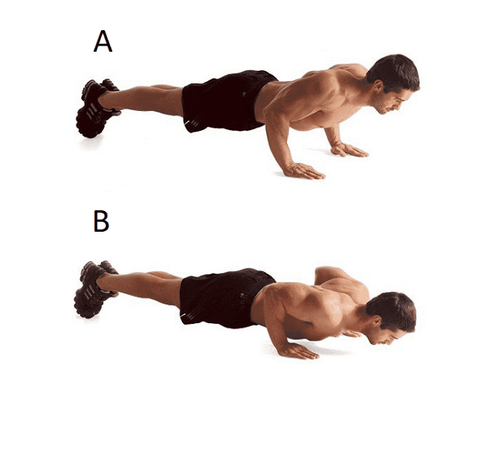
Hít đất thả tay là bài tập nâng cao
2.7 Hand-release push-up Hand-release push-up is an advanced exercise. What specific muscle is the push-up exercise, which is the chest muscle. Here's how:
Start in a high plank position, pelvis pulled in, keeping neck stationary. Lower your body to the floor, keeping your elbows slightly behind, tense your muscles, and keep your back flat until your chest touches the floor. Extend elbows to push body off floor to return to head position. Continue to use force to keep your upper body in a position of dropping your hands off the floor and clap your hands quickly. Return to the ground and lower your chest in again. You can do this exercise as many times as you can depending on your fitness and do it in 3 sets. 2.8 Leg push-ups The high-legged push-ups are a variation of the standard push-ups and require more force on the shoulders and triceps. So the push-up exercise works on specific muscles, which are shoulders, triceps, upper back, and triceps. Do this exercise like this:
Start on all fours with your hands shoulder-width apart, heels touching the ground and head looking down. The buttocks are raised in the air, the arms are kept straight. Bend your hips so your body forms an upside-down V. Inhale, keeping your glutes and core tight, elbows bent to lower your head, so that your head touches the floor lightly. Exhale, use your arms to push straight up to lift your head and shoulders back to the starting position. Start this exercise from 1 - 5 times, then increase to 8 - 12. What specific muscle-gain push-ups always get the attention of the practitioner. This is a very good strength exercise for the muscle groups in the chest, shoulders, upper body muscles as well as some muscles in the middle and lower back. You can choose the above push-up exercises to train and improve your fitness.
Please dial HOTLINE for more information or register for an appointment HERE. Download MyVinmec app to make appointments faster and to manage your bookings easily.
References: healthline.com, medicalnewstoday.com, health.com




